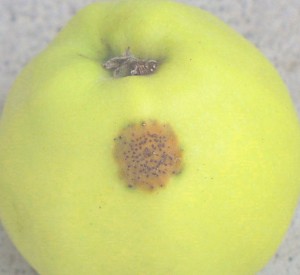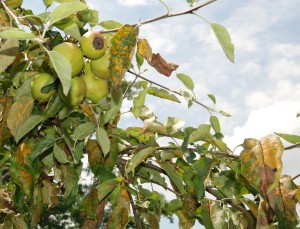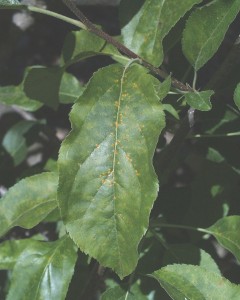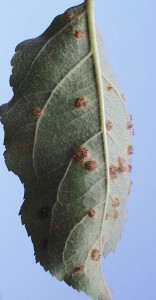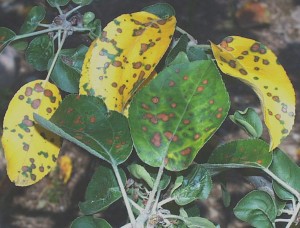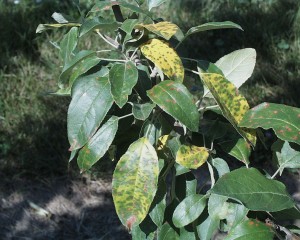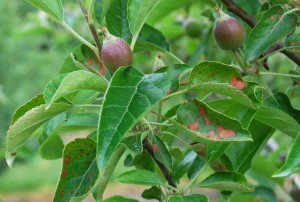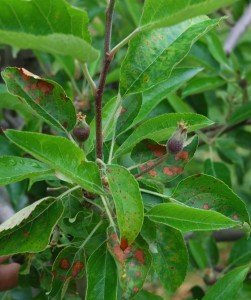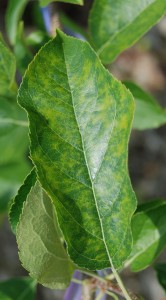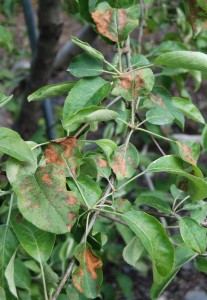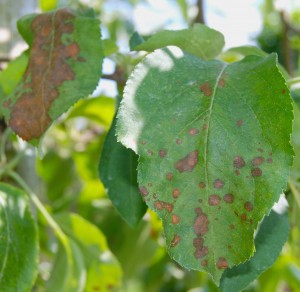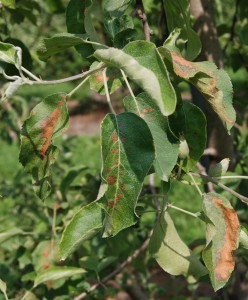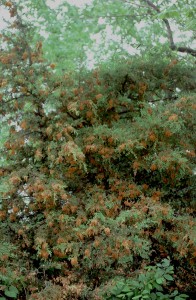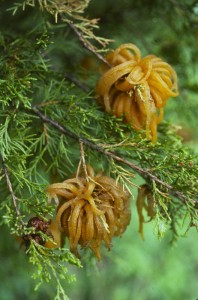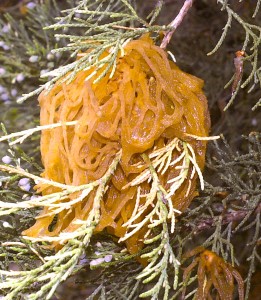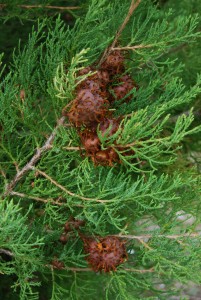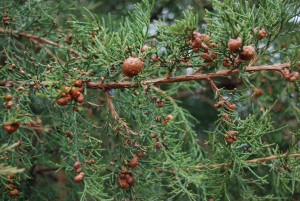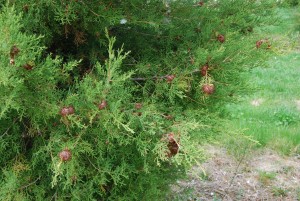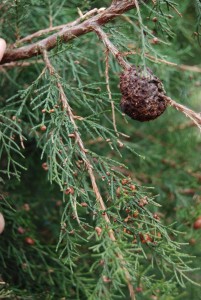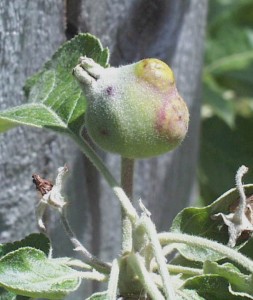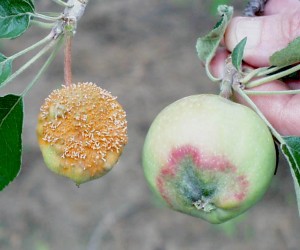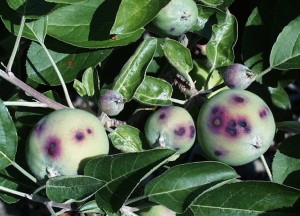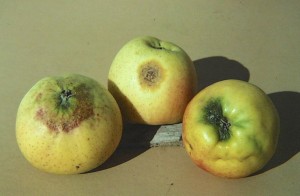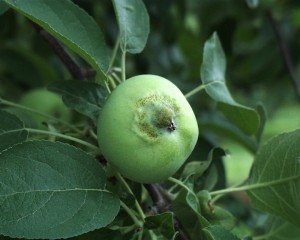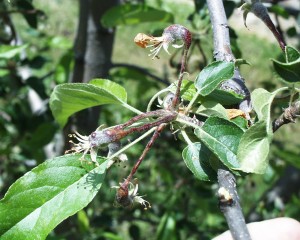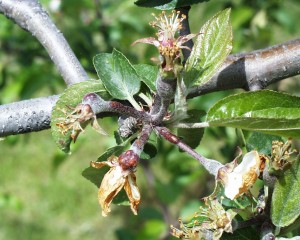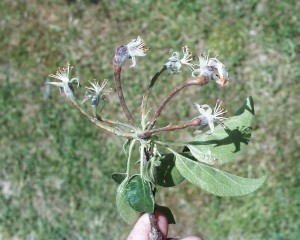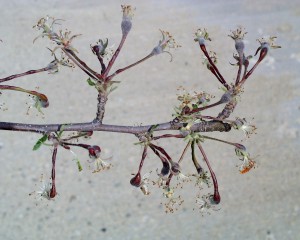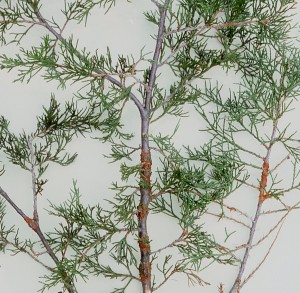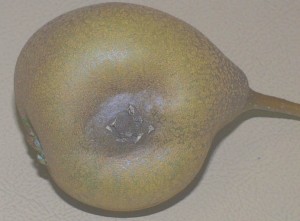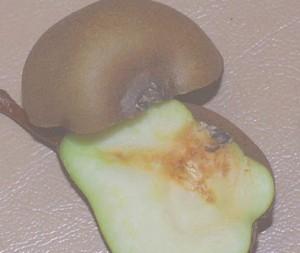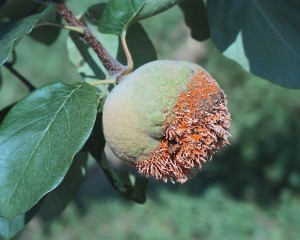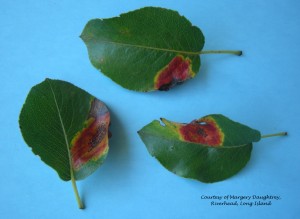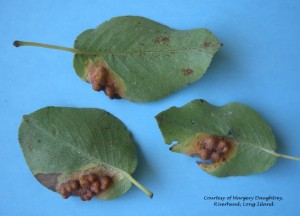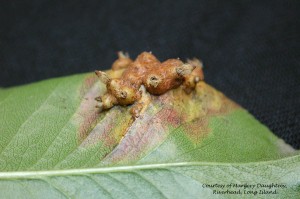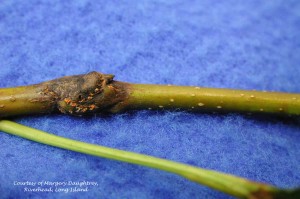Links to recent or useful information on rust diseases (in addition to photos further down on this page):
2016: Rust Diseases of Apples and Pears. This article in Scaffolds Fruit Journal reviews the six species of rust diseases that can occur on apples and pears in the Northeastern United States and measures for controlling them.
2005: Susceptibility of New Apple Cultivars to Rust Diseases in Southeastern NY.
This poster provides assessments of susceptibility to cedar apple rust, quince rust, and hawthorn rust in graphic format, along with some photos. (This is a very large file, so it may take a while to load). Most of the data shown in graphics on this poster were presented in tables, along results of statistical analysis, in the 2003 Fruit Quarterly article listed below (see the next link).
2003: Susceptibility of New Apple Cultivars to Common Apple Diseases. Publication in New York Fruit Quarterly.
Photos of Cedar apple rust on apple fruit and leaves:
- Cedar apple rust on Ginger Gold fruit 22 Jul 06
- Severe cedar apple rust on Ginger Gold 1 Jul 09
- Early stages of cedar apple rust on Golden Delicious showing small lesions and leaf yellowing
- Cedar apple rust aecia on Ginger Gold in August
Rust-induced leaf spotting on apples: Cedar apple rust infections may fail to develop either because they are arrested by fungicides with post-infection activity or because host-resistance in some cultivars prevents further development. However, the rust spores germinating on apple leaves apparently kill or injure some of the leaf cells, and these compromised cells are subsequently invaded by secondary pathogens such as Phomopsis, Alternaria, or Botryosphaeria species that cause leaf spotting. In some cases, the leaf spotting can cause as much leaf damage as would have occurred if the development of the rust pathogen had not been impeded.
- Rust-induced leaf spot on selection NY75907 23 Jul 06
- Rust-induced leaf spot on Zestar 19 Jun 01
- Cedar apple rust infections and rust-induced leafspot on Ginger Gold 4 Jun 08
- Rust-induced leaf spot 4 June 08
Rust-induced leaf scorch: When apple trees are exposed to high concentrations of rust spores, some leaves develop a generalized leaf yellowing (upper left photo below) that is independent of the appearance of rust lesions. Scorch refers to development of necrotic leaf tissue either along leaf edges or between veins, and it appears in late May or early June on leaves that were severely compromised by rust and may occur even on cultivars that are considered resistant to the development of cedar apple rust. Leaf scorch may result from invasion of leaves by secondary pathogens or from phytotoxicity caused by other pesticides that are absorbed into rust-damaged leaf tissue.
- Leaf bronzing on Golden Delicious caused by severe rust infection 1 Jul 09
- Rust-induced leaf scorch 30 May 13
- Rust-induced leaf scorch 30 May 13
- Rust-induced leaf scorch 30 May 13
Cedar apple rust on cedars:
- Red cedar heavily infected with cedar apple rust
- Cedar apple rust on cedar
- Cedar apple rust teliohorns fully extruded during rains
- Rust teliohorns drying after rain 21 May 2008
- Cedar apple rust teliohorns emerging in early spring rain 3 April 2009
- Red cedar with an abundance of cedar rust galls 3 April 2009
- Rust teliohorns drying after a rain 21 May 2008
- Red cedar with a dead gall from previous year and current season galls 3 April 2009
Quince rust on apple fruit:
- Quince rust on young Jerseymac fruit in early June
- Two different symptoms of quince rust infection on fruit
- Multiple quince rust on Jerseymac fruit in 19 Jun 01
- Quince rust on Golden Delicious apples
- Quince rust on McIntosh 12 Jul 99
- Quince rust on apple fruit
Quince rust on apple fruit stems: Photos taken shortly after bloom in 2005 in a variety trial at the Hudson Valley Lab where apples were planted close to cedar trees. Infections on fruit stems will cause the fruitlets to abscise and can result in total loss of the crop.
- Quince rust on fruit pedicels shortly after bloom.
- Quince rust on fruit pedicels of selection QCR12T50 in 2005
- Quince rust on fruit pedicel of Golden Delicious in 2005
- Quince rust on fruit pedicels of Delblush 19 May 2005; leaves were removed to show the extend of fruit stem infections.
Quince rust on cedars:
- Quince rust canker as it appears in wet weather.
- Quince rust cankers on red cedar as they appear during rains.
Quince rust on quince and pear fruit:
- Quince rust in immature Bosc pear
- Quince rust on Bosc pear showing penetration to seed cavity
- Quince rust with aecia
Pear trellis rust on pears (photos courtesy of Margery Daughtrey, Long Island Hort Reseach Center):
- Pear trellis rust as seen on the upper side of Comice pear leaves.
- Pear trellis rust as seen on the underside of Comice pear leaves.
- Aecia of pear trellis rust
- Pear trellis rust on a young shoot on Bradford pear.
Updated 28 July 2025
